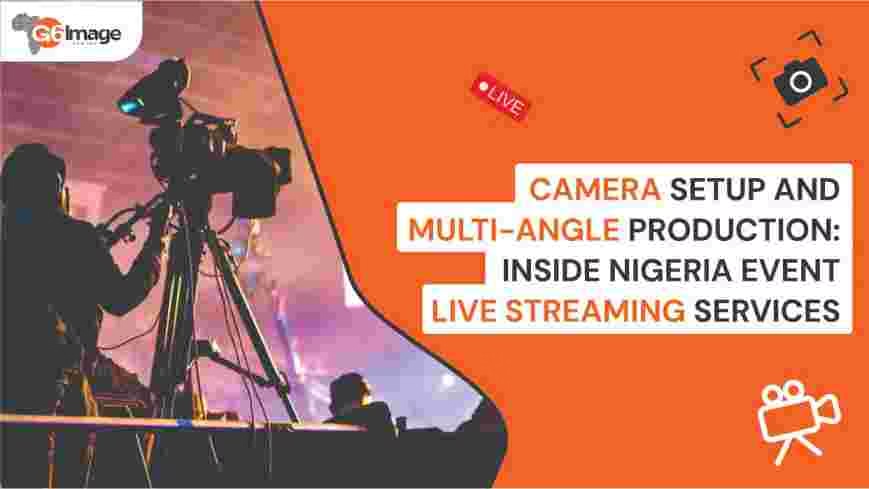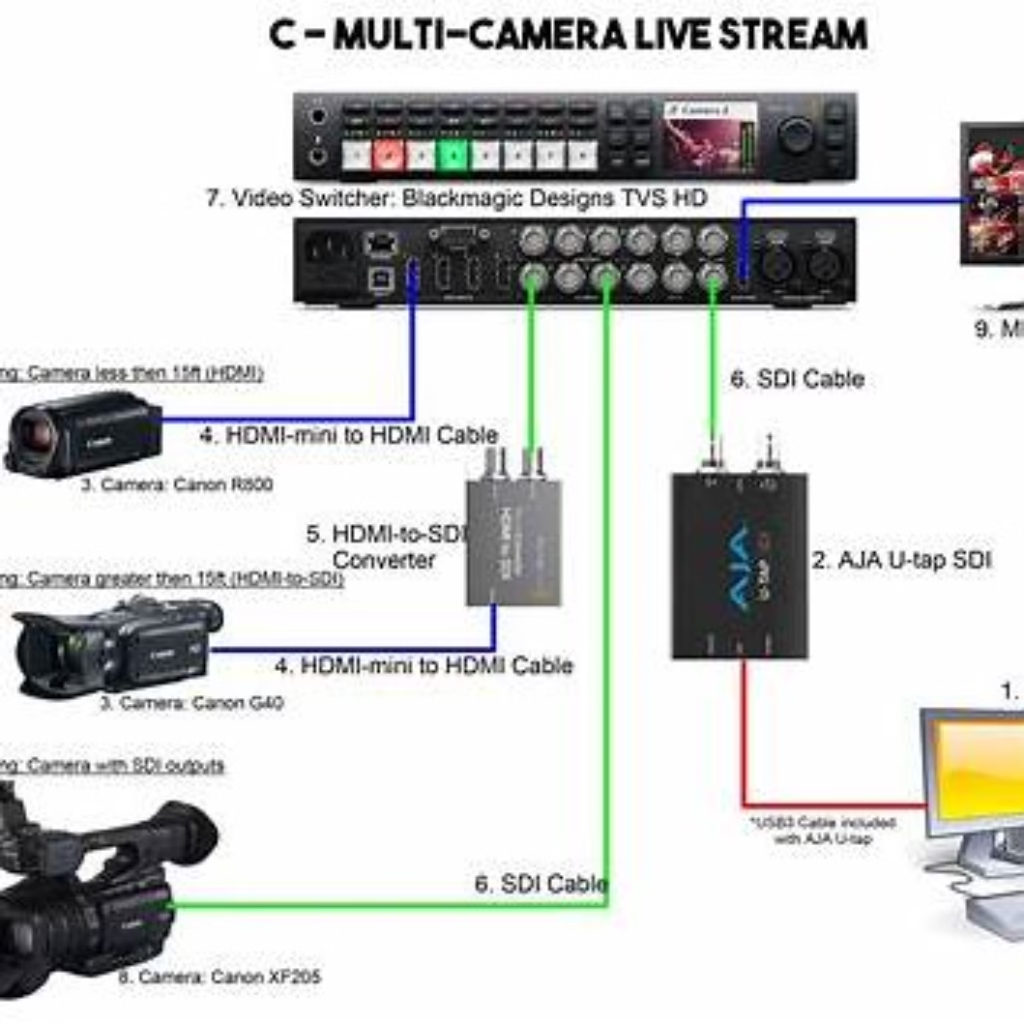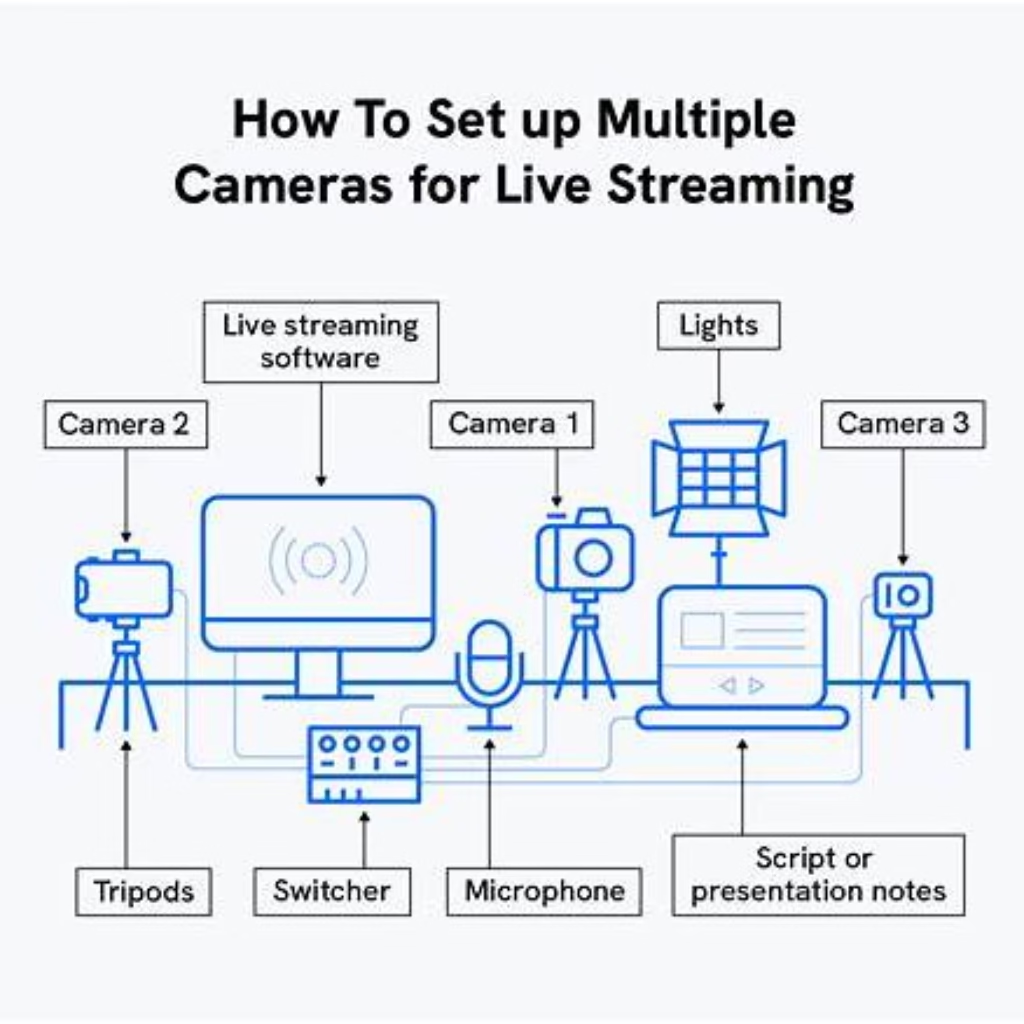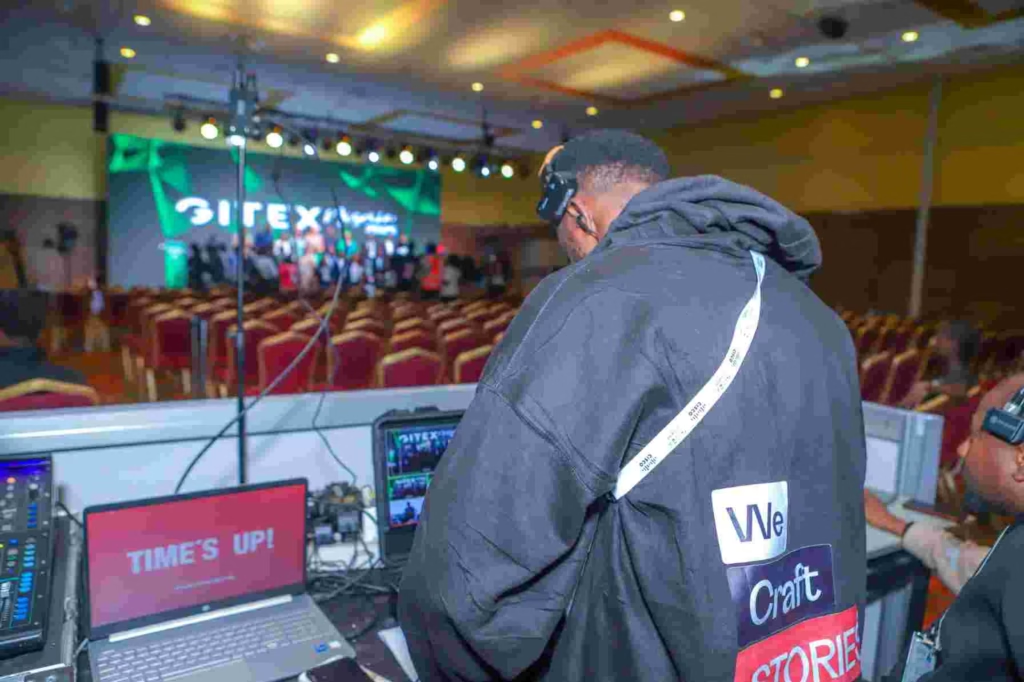
Hosting an event in Nigeria and want it streamed flawlessly? The secret lies in camera setup and multi-angle production. Professional Nigeria event live streaming services ensure your audience experiences every angle from the stage to the crowd as if they were right there. At G6 IMAGE, we specialize in delivering multi-camera productions with international standards.
Call us today at +2347037529494 or email contact@g6image.com to book your next event. Explore our services: Nigeria Live Streaming.
Table of Contents
- Why Multi-Angle Camera Setup Matters for Live Streaming Services
- Essential Camera Equipment for Nigeria Event Live Streaming Services
- Strategic Camera Placement & Shot Design
- Switchers, Encoders & Signal Routing in Multi-Angle Production
- Synchronization, Color Matching & Signal Integrity
- Redundancy & Backup in Multi-Angle Live Streaming Services
- How G6 IMAGE Executes Multi-Angle Production in Nigeria Events
- Conclusion & Final CTA
1. Why Multi-Angle Camera Setup Matters for Live Streaming Services
In event broadcasting, offering a single camera angle is often insufficient. Multi-angle camera setup instantly elevates your production quality viewers experience the event more engagingly, switching between wide shots, closeups, audience views, and details. In Nigeria event live streaming services, multi-angle production has become a standard expectation for corporate launches, concerts, conferences, and hybrid events.
By delivering multiple visual perspectives, your live streaming services output becomes dynamic, cinematic, and richer in storytelling. This is especially critical in Nigeria, Lagos, Abuja, or Lekki, where audiences expect polished, professional broadcasts.

If you want flawless multi-angle coverage, reach out: +2347037529494 or contact@g6image.com.
2. Essential Camera Equipment for Nigeria Event Live Streaming Services
A robust multi-angle camera setup hinges on choosing the right gear. Below are the must-have components for any high-end live streaming services setup:
- Cameras with clean HDMI/SDI output
Use identical or nearly identical models (mirrorless, broadcast camcorders, PTZs) so color and exposure match across angles. - Lens selection
Mix wide, mid, and telephoto lenses. For example, one camera for wide stage shots, another for closeups, another for the crowd. - Tripods / fluid heads / pedestals
Each angle must be stable and smoothly adjustable. - PTZ (Pan/Tilt/Zoom) cameras
For remote control angles especially useful for capturing side stage, back view, or audience without needing a cameraman. - Capture cards or SDI converters
If the camera outputs HDMI, you may need HDMI → SDI converters for longer cable runs or compatibility with broadcast switchers. - Cabling and infrastructure
Use quality SDI cables (BNC), fiber or SMPTE cables for long distances, with signal boosters if needed. - Video switcher / mixer
A switcher allows live switching between multiple angles in real time (hardware or software). - Encoder & streaming interface
The output from the switcher is fed into the encoder for delivery to viewers. - Monitors / Multiview
A Multiview monitor helps the director preview all camera feeds at once.
With the right camera setup tools, your event’s visual storytelling becomes flexible and compelling.
3. Strategic Camera Placement & Shot Design in Nigeria Event Live Streaming Services
How and where you place each camera matters tremendously in multi-angle production for Nigeria event live streaming services.
- Wide / Establishing shot
One camera covers the full stage and environment to set context. - Main / Key shot (anchor camera)
Best angle where the principal speaker or subject is framed head-on. - Closeup / Detail shots
One or more cameras for tight frames: speaker gestures, product demos, audience reactions. - Audience / Reaction camera
Captures crowd engagement, applause, and side moments. - Backstage / secondary angles
For behind-the-scenes or alternate vantage points.
Plan a shot list and scene flow in advance. During rehearsal, mark camera zones, test sightlines, and ensure no camera blocks another. Good placement ensures the multi-angle production feels smooth and not jarring to your viewers.

4. Switchers, Encoders & Signal Routing in Multi-Angle Production
Once your camera setup is in place, you need to route signals, switch between camera feeds, and encode for live streaming:
- Video Switchers / Mixers
Use hardware (e.g. Blackmagic ATEM, Roland) or software (vMix, Wirecast, OBS) to switch live between camera feeds. - Multiview / Preview / Program
The director monitors all feeds (preview) and decides which angle goes live (program). - Signal routing & matrixes
For large setups, signal paths may be routed via SDI matrix routers, fiber, or networked video protocols (NDI) to move camera feeds to the switcher. - Encoder / RTMP / SRT / NDI output
The switcher output or Multiview is sent to an encoder for live streaming services delivery. - Adaptive bitrate & transcoding
Encode multiple bitrates (e.g. 1080p, 720p, 480p) so the viewer’s connection determines which stream they receive. - Audio embedding / mixing
Audio for each camera or external sources must be mixed and embedded to match the video feed before encoding.
In Nigeria event live streaming services, we often deploy hybrid encoder workflows to balance latency, quality, and redundancy.
5. Synchronization, Color Matching & Signal Integrity
One of the frequent challenges in multi-angle production is ensuring consistency across cameras. Here are key tips:
- Match camera settings
Use identical settings—for shutter speed, white balance, ISO, color profile—so transitions between angles are seamless. - Use genlock / timecode
For professional setups, synchronize all cameras using genlock or timecode to avoid drift or misalignment. - Check signal integrity
Monitor for dropped frames, signal loss, or cable faults using scopes or monitoring tools. - Color grading or LUTs
Apply light color correction or LUTs (lookup tables) to bring all angles to uniform tonality. - Latency alignment
Ensure no camera feed lags behind others significantly. If so, buffer or delay faster feeds to sync.
These synchronization methods help your multi-angle live streaming services output look polished and coherent.
6. Redundancy & Backup in Multi-Angle Live Streaming Services
Because multiple cameras increase complexity, you must build redundancy to avoid failure. In Nigeria event live streaming services, reliability is non-negotiable. Here’s how:
- Backup switcher / redundant path
Use a secondary switcher feed or backup route in case the primary fails. - Dual encoder streams
Send the program feed to two separate encoders or ingest servers to avoid single point failure. - Recording every camera feed
Record locally (edge recording) each camera’s input so you can reconstruct in post even if live switching fails. - Redundant power & cabling
Use UPS, dual power supplies, backup cabling paths, and cable redundancy. - Monitoring & auto failover logic
Use software that detects camera or signal failure and switches to alternate feed automatically.
With redundancy baked into multi-angle production, your live streaming services remain resilient even under technical stress.
7. How G6 IMAGE Executes Multi-Angle Production in Nigeria Event Live Streaming Services
At G6 IMAGE, multi-angle production is part of our DNA in offering top-tier live streaming services across Nigeria. Here’s how we do it:
- Strategic presence
We operate in Lagos (see our Lagos live streaming page), Abuja (see Abuja live streaming page), and Lekki (see Lekki live streaming page). - Custom camera rigs per event
For large events, we deploy 4–8 cameras with PTZs and Steadicam, with intelligent shot planning. - Pro-level switcher + encoding infrastructure
We use hardware/video switchers with dual encoders for redundancy and adaptive bitrate streams for global audience delivery. - Experienced technical team
Our operators monitor signal integrity, sync, color matching, and backup triggers in real time. - Edge recording & post-production fallback
Every camera feed is recorded locally, enabling us to recover or re-edit segments if needed. - Seamless integration with venue networks
We tie into venue internet, provide backup links, and manage routing to ingest servers for efficient delivery.

For Related Topics on Nigeria Event Live Streaming Services
Multi-Camera Event Setup – Corporate Event Photography and Videography (Corporate Pixels)
Talks about how having several camera angles elevates event production, captures important moments that might be missed, and increases engagement.
Hybrid Events: Multi-Camera Streaming for In-Person and Virtual Audiences (Corporate Optics Blog)
A solid article showing how multi-angle setups enhance hybrid events and why they are especially useful when there are virtual attendees
In Nigeria event live streaming services, mastering camera setup and multi-angle production is crucial. The difference between a basic broadcast and a compelling, professional stream lies in your camera planning, switcher logic, synchronization discipline, and backup architecture.
When you partner with G6 IMAGE, you’re choosing a team that understands how to combine all these facets under high stress and live conditions. Whether in Lagos, Abuja, Lekki, or across Nigeria, we deliver immersive multi-angle streams that stand out.
Call now: +2347037529494
Email: contact@g6image.com
Learn more or book us at:
- Nigeria: G6 IMAGE Nigeria Live Streaming
- Lagos: Event Live Streaming Lagos
- Abuja: Event Live Streaming Abuja
- Lekki Lagos: Live Streaming in Lekki
Don’t settle for flat or single-angle coverage let G6 IMAGE bring your event to life from every perspective.



